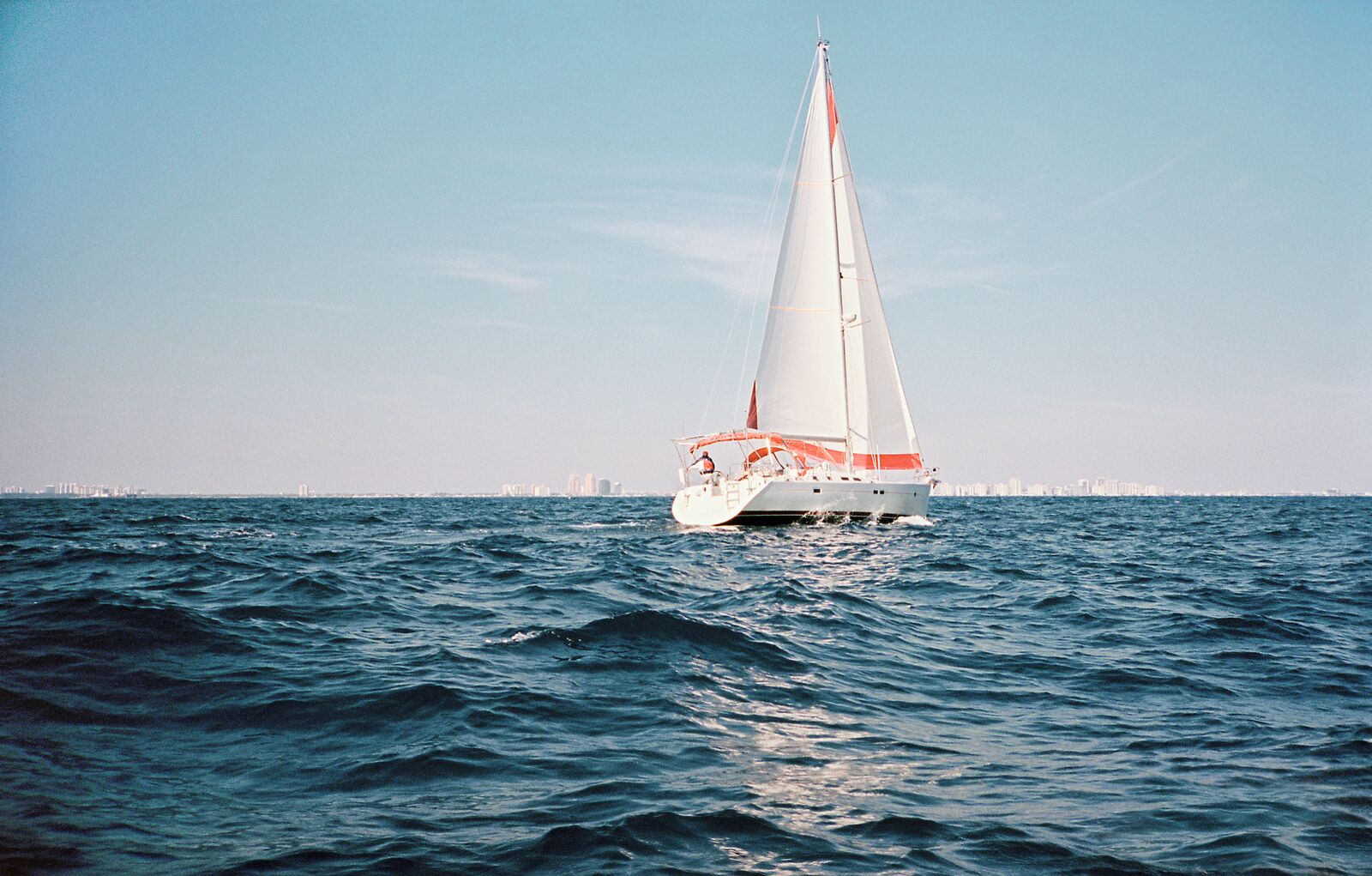A flagship model of the 2000s, the Puma Speedcat OG celebrated its 25th anniversary last year. In 2025, it proves that it’s more relevant than ever. Let’s take a look back at the story of this sneaker, originally designed for Formula 1, which left the racetrack to conquer the city streets.
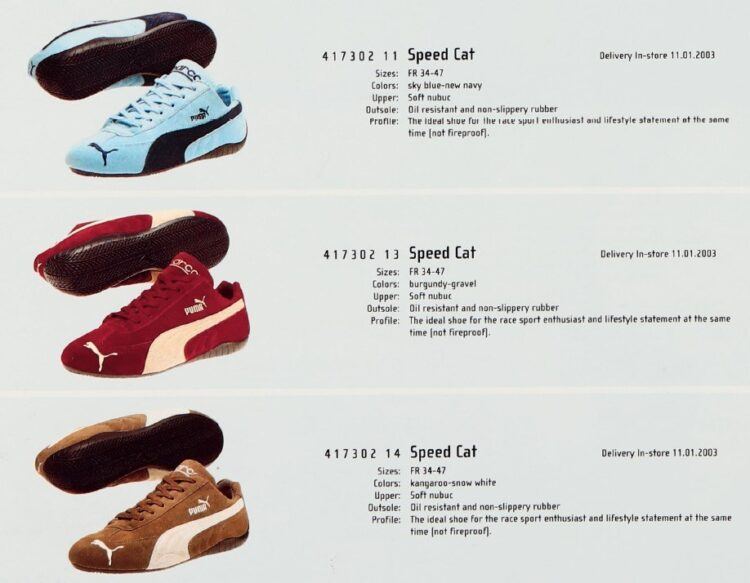

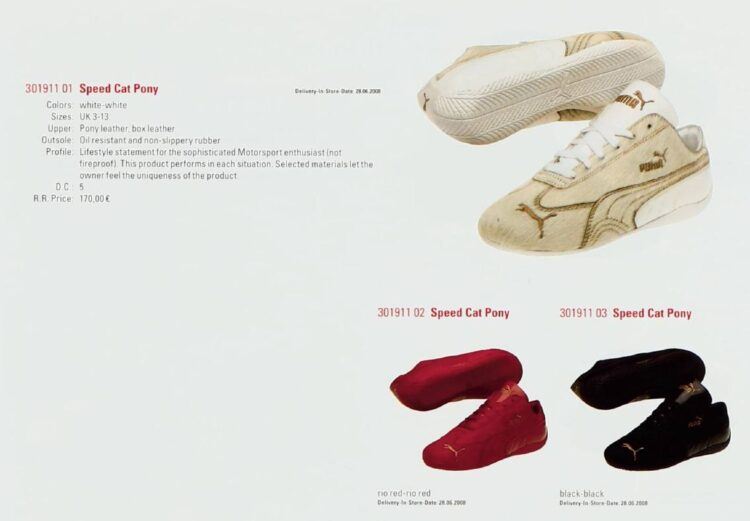
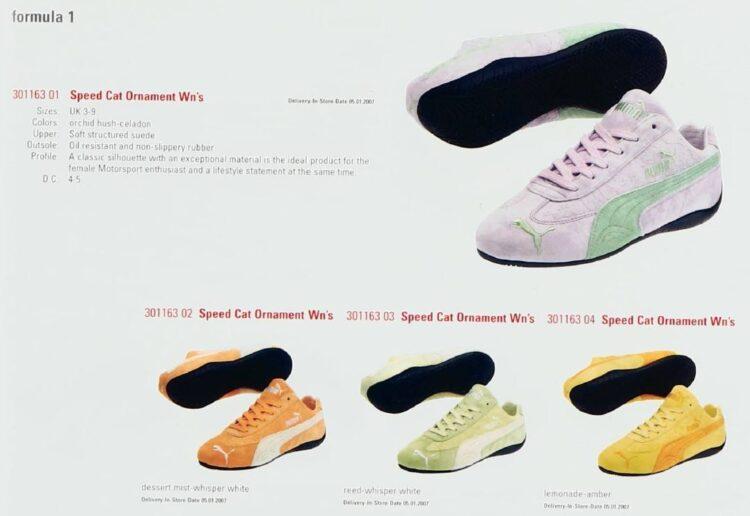

Speedcat OG: A key ally for F1 drivers
Created in 1999, the Speedcat traces its roots back to the previous decade, when Puma designed a high-top leather shoe for German driver Stefan Bellof. At the launch of the now-iconic model, the brand offered two versions: one high-top and one low. The former provided support and comfort for elite athletes, while the latter was perfectly suited to city wear.
In the early 2000s, Puma partnered with the Ferrari team, led by champion Michael Schumacher, who became the face of the Speedcat OG. On and off track, Schumacher played a major role in making the shoe a cult favorite.
What won people over? Its slim, comfortable sole offered excellent grip, a crucial feature for drivers looking for full pedal control. Its leather and suede construction made it both durable and breathable. The shoe’s unique silhouette, accentuated by Puma’s signature white stripe, set it apart from the competition. Proof that Puma understood drivers’ needs perfectly: the Speedcat is still worn by today’s stars like Max Verstappen and Lewis Hamilton, who have both featured in dedicated campaigns.


Streetwear Essential
By 2010, Speedcat OG had already sold nearly 30 million pairs. Today, thanks to its recent reissue and multiple collaborations, it has become one of Puma’s biggest successes. Its vintage design, perfectly in sync with current trends, and the many icons from sports to music, who’ve worn it, explain its enduring popularity. All of this makes it the latest obsession with Gen Z.
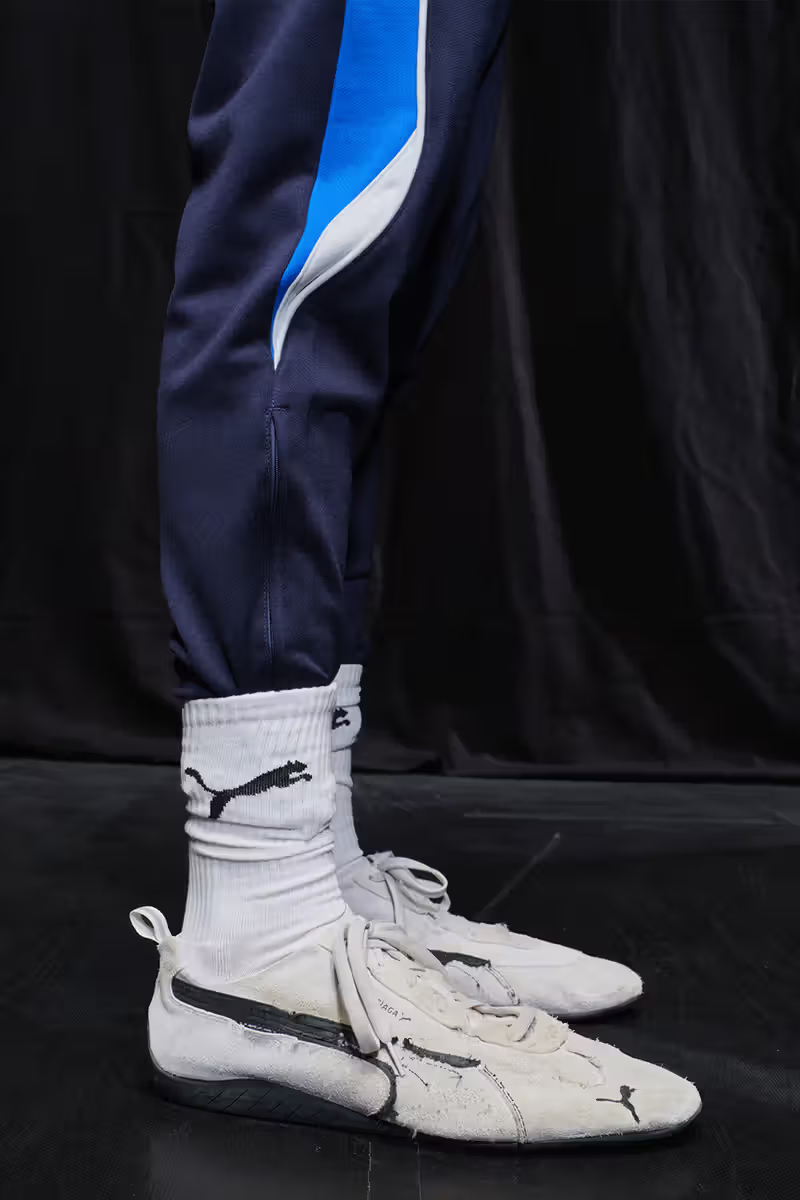
Demna, former creative director at Balenciaga, even selected the Speedcat for his latest collection. Reimagined in a slightly worn version, partly stripped of its signature Formstrip, the model was paired with football joggers, another sport close to Puma’s heart. Titled “Standard,” the collection playfully questions Western social and fashion norms. The Speedcat’s inclusion underscores that it’s more than just a sneaker, it’s a cultural artifact.
Eager for Y2K-inspired pieces, Gen Z quickly embraced Puma’s reissue celebrating the shoe’s 25th anniversary, especially as flat-soled sneakers make a big comeback. A true fashion statement, the Speedcat is especially popular with women, who style it with feminine looks: miniskirts or shorts, high socks or leg warmers to elevate the pair.
Puma made a bold move with its collaboration with South Korean label Open YY, unveiling a ballet-core version in three shades beige, black, and pale pink adorned with gold or silver details. A soft and elegant reinterpretation of its F1 heritage, from the racetrack to the dance studio.
Nostalgia, We Meet Again
Speedcat OG isn’t the only model reconnecting with its roots. Other motorsport-inspired sneakers like Future Cat, RDG-Cat, R-Cat, Driftcat, and Kartcat are also gaining in popularity, even though they haven’t (yet) seen reissues.
Launched the same year as Speedcat, the Mostro is also making a bold comeback in 2025. Inspired by surf booties, it’s being reimagined with daring colour combos and technical material contrasts. Relaunched through high-profile collaborations including with Louis Gabriel Nouchi and A$AP Rocky, it’s reclaiming the spotlight, proving that the 2000s nostalgia wave is far from over.
In a sneaker world that’s more crowded than ever, Speedcat OG runs its own race. Loyal to its origins yet firmly rooted in today’s trends, it brings together motorsport fans, fashion lovers, and 2000s nostalgics. More than just a comeback, it’s proof that some silhouettes are meant to keep on moving and not just sit in the garage.




